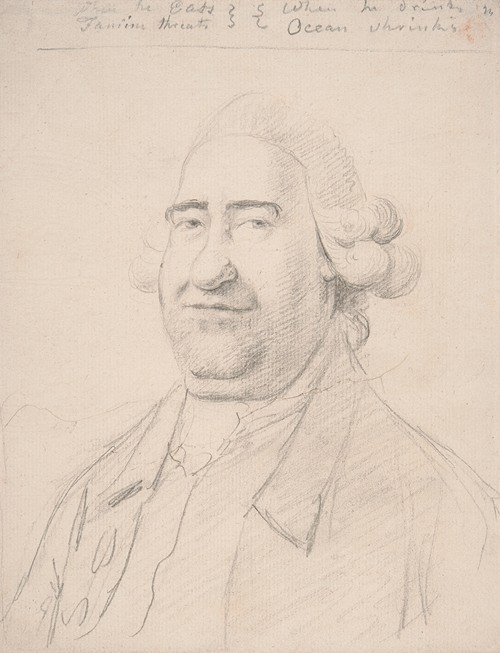
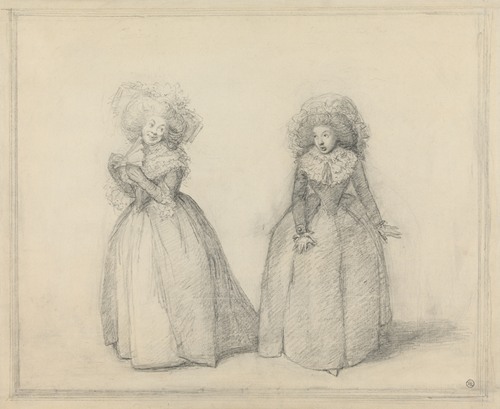
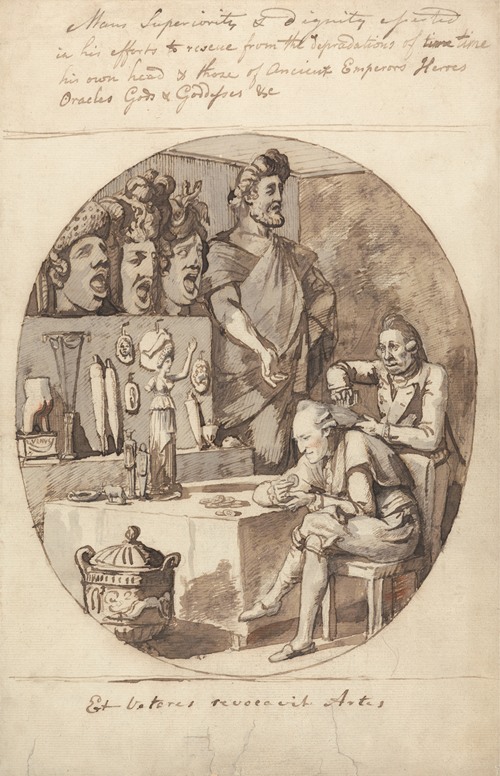
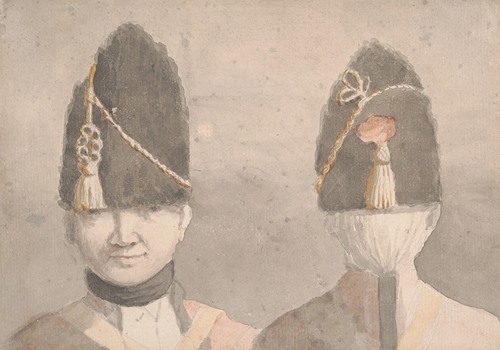
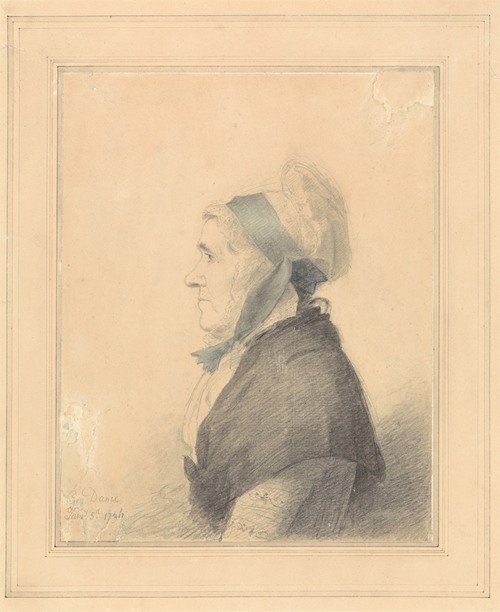
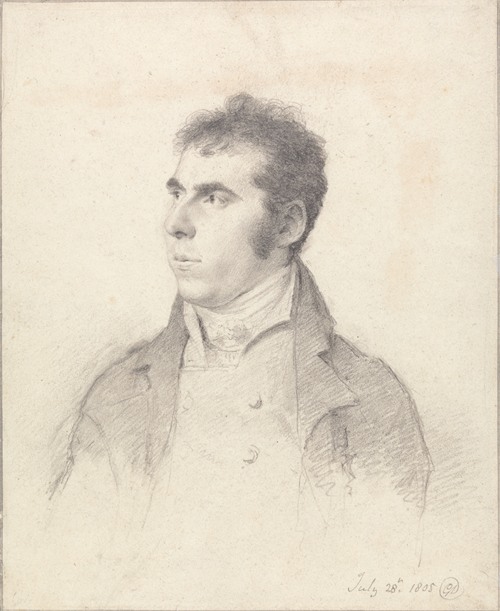
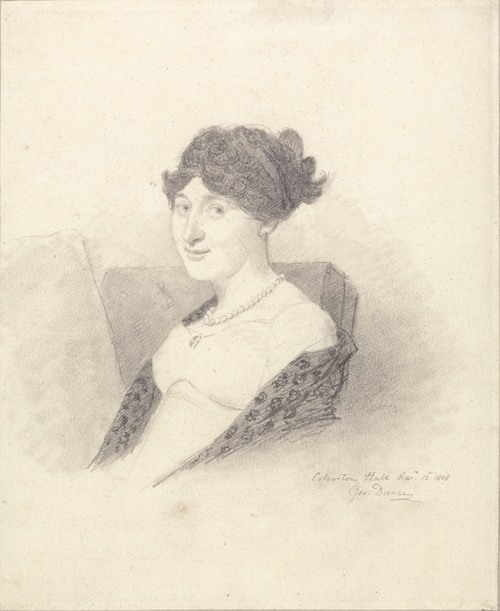
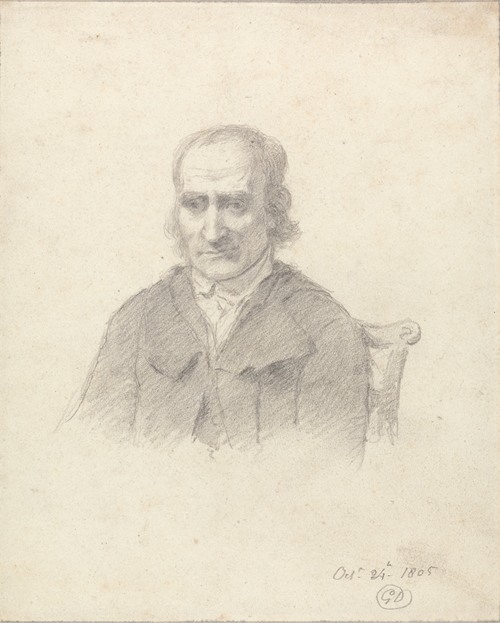
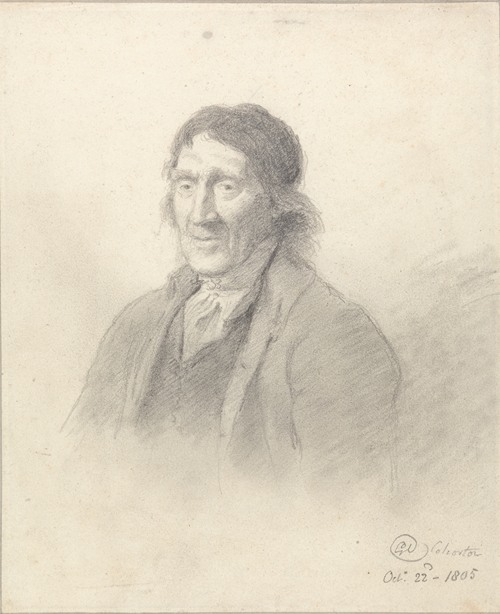
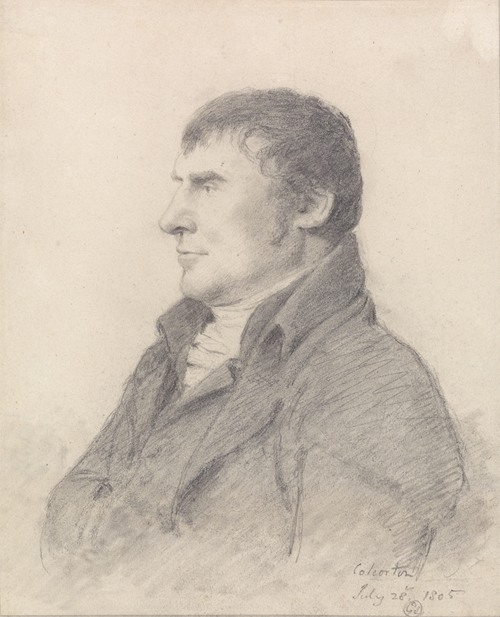
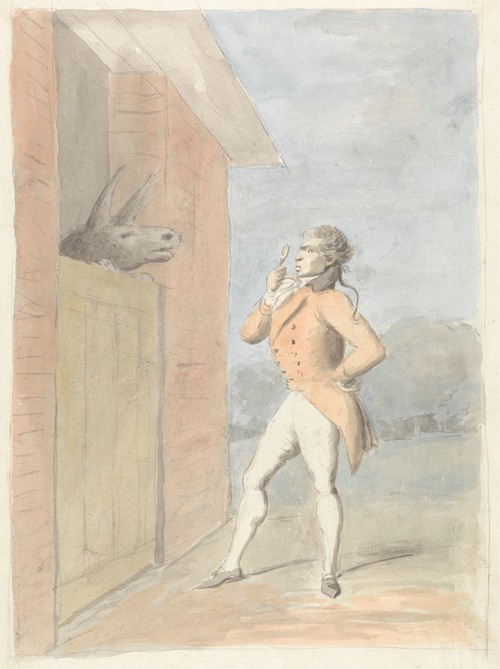
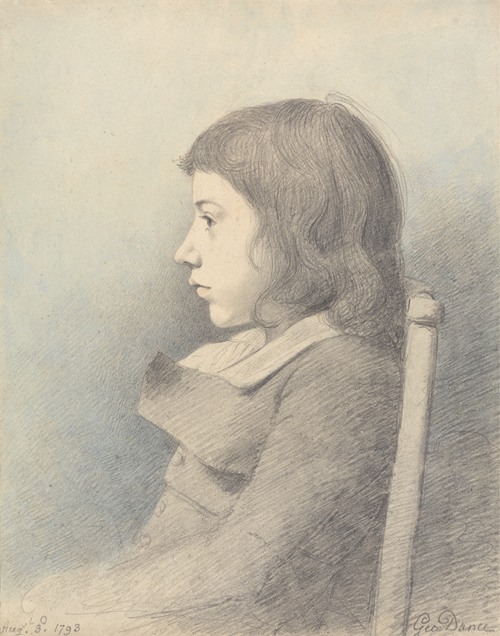
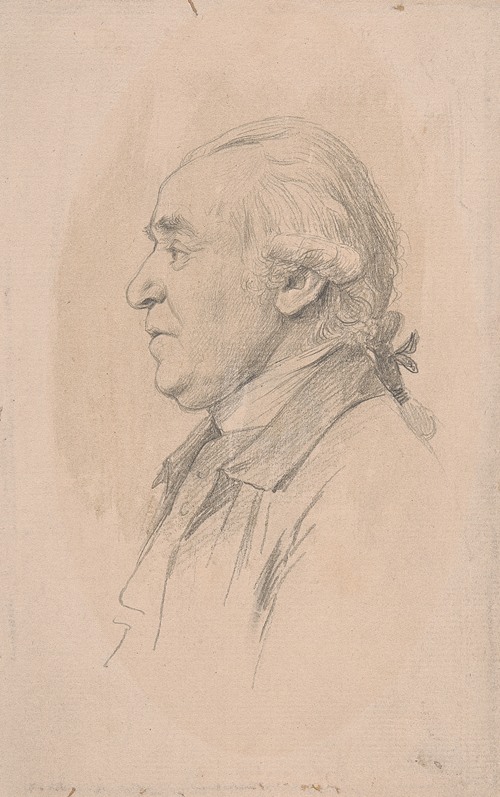
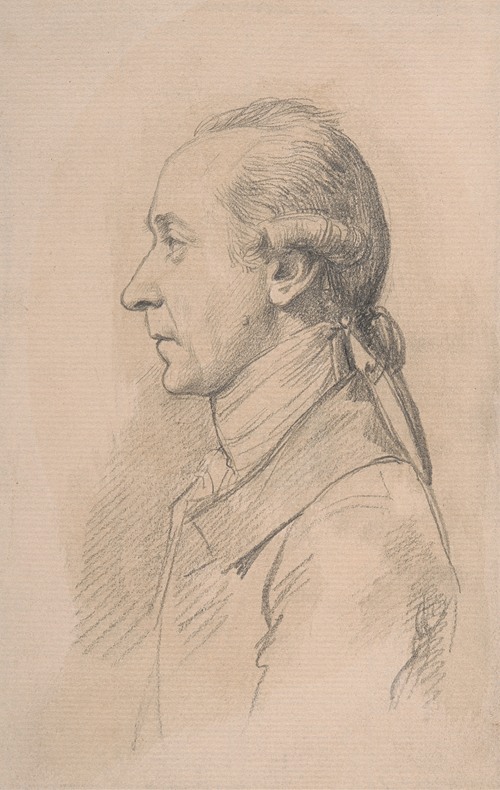
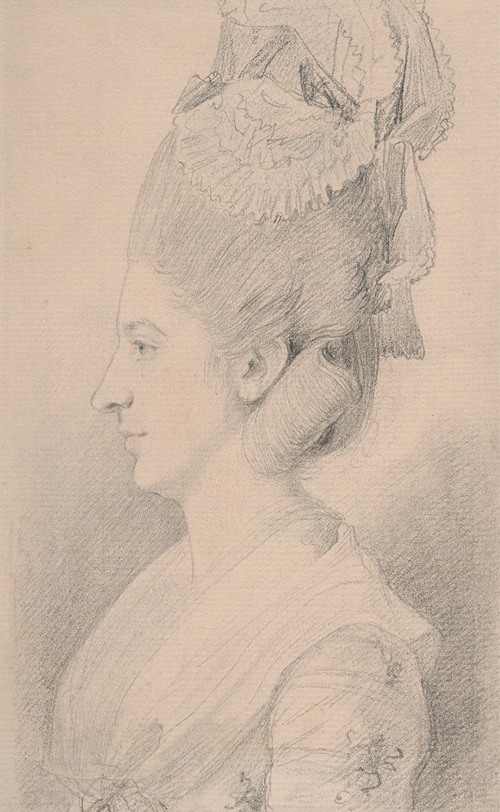
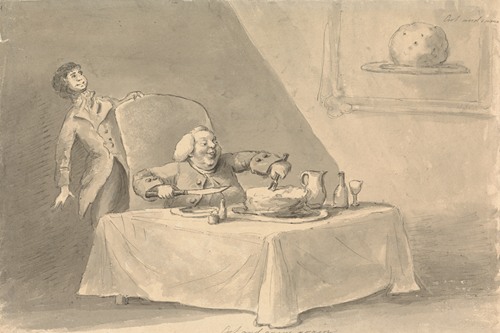



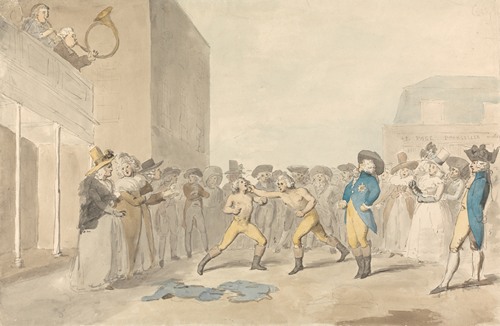
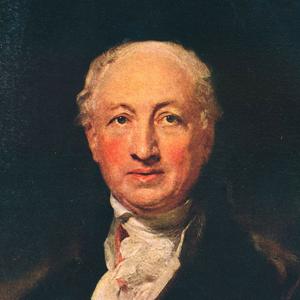

George Dance the younger, RA was an English architect and surveyor as well as a portraitist.
The fifth and youngest son of the architect George Dance (the elder), he came from a family of architects, artists and dramatists. He was described by Sir John Summerson as "among the few really outstanding architects of the century", but few of his buildings remain.
The architect George Dance the elder married Elizabeth Gould in 1719. Their fifth son, George, was born 1 April 1741 at the family home in Chiswell Street, London and was educated at St Paul's School.
Dance spent the six years between 1759 and 1765 studying architecture and draughtsmanship in Rome. Aged 17, he set off on his Grand Tour, sailing from Gravesend, Kent in December 1758. After a short stay in Florence, where he was joined by his brother Nathaniel, who was already studying painting in Italy, he and his brother set off for Rome, arriving in early May 1759. By the early 1760s the brothers were living at 77 Strada Felice. At Rome, Dance was acquainted with the architect, James Adam, who was staying nearby at the Casa Guarini, Robert Mylne (they remained lifelong friends), Abbot Peter Grant and Giovanni Battista Piranesi. As a student of the Accademia di San Luca, Dance measured and drew several buildings in Rome, including the three remaining columns of the Temple of Castor and Pollux, the Arch of Constantine and the dome of St. Peter's Basilica, showing much promise as a draughtsman. Much of his later work was inspired by Piranesi. In late 1759 Dance received his first commission – to design two chimneypieces for Sir Robert Mainwaring.
In early 1762 Dance was measuring and drawing the Temple of Vesta, Tivoli and later that year he entered a competition organised by the Accademia di Parma to design A Public Gallery for Statues, Pictures & c.. His drawings were dispatched to Parma in April 1763, and a few weeks later it was announced that he had won the gold medal, and his designs were exhibited at the Ducal Palace. The projected building was in the latest style of neoclassical architecture. During June 1764 the Dance brothers were in Naples, but later that year they were back in Rome, entertaining the actor David Garrick and his wife. On 21 December 1764 George Dance and his brother were elected to the Accademia di S. Luca, where he was described as Giorgo Danze, architetto Inglese. On 16 February 1765 Dance dined with the painter Angelica Kauffman and James Boswell who was visiting Rome. A few weeks later the brothers left Rome to return to London.
On his return from the Grand Tour, George (the younger) joined his father's office. His earliest London project was the rebuilding of All Hallows-on-the-Wall Church. He was one of five architects asked to submit designs, and his design was chosen on 8 May 1765. Work on the building starting in June 1765, at a cost of £2,941, and the building was consecrated on 8 September 1767.
In 1768, when he was only 27, George succeeded as Architect and Surveyor to the Corporation of London on his father's death. His first major public works were the rebuilding of Newgate Prison in 1770 and building the front of the Guildhall, London. Other London works of his include the rebuilding of the Church of St Bartholomew the Less (1793), a former chapel within the precincts of Barts Hospital.
At Bath, Somerset he largely designed the Theatre Royal, built by John Palmer in 1804–5.
Coleorton Hall was one of his few buildings in the Gothic style.
Many of Dance's buildings have been demolished, including the Royal College of Surgeons (apart from the portico), Newgate Prison, St Luke's Hospital for Lunatics, the Shakespeare Gallery in Pall Mall, the library at Lansdowne House, the Common Council Chamber and Chamberlain's Court at the Guildhall, Ashburnham Place, and Stratton Park (demolished save for its Tuscan portico). Dance retired from practice in 1815.
Dance's long career spanned several of the conventional phases of the Neo-Classical movement, from mid-18th century French Classicism to the full blown Greek Revival of the early 19th century. As such, he also played an important role in the careers of several major architects within this continuum, such as Sir John Soane and Sir Robert Smirke. His innovative interiors for the church of All Hallows-on-the-Wall, the Guildhall Common Council Chamber, and the sculpture gallery of Lansdowne House were key to the development of Soane's first work at the Bank of England, the Bank Stock Office in 1792. On Dance's recommendation, Robert Smirke joined Soane's office as a pupil in 1796, but when the two fell out after less than a year, Dance continued to champion Robert Smirke who went on to become the country's leading Greek Revival architects. Significantly, some of Dance's later work embraced the increasingly austere Greek Revival style, such as the Ionic portico on Stratton Park of 1803 and on the Royal College of Surgeons (built 1806 onwards, so one of the first strict Greek Revival porticos in London).
With his brother Nathaniel, George Dance was a founder member of the Royal Academy, founded on 10 December 1768. In 1795, with William Tyler, Dance was appointed to examine the accounts of the Royal Academy following the resignation of Sir William Chambers, and in 1796 they became the Academy's first auditors, helping put the institution on a sounder financial footing.
In 1798 Dance succeeded Thomas Sandby as professor of architecture at the Royal Academy, but as he failed to deliver a single lecture he was dismissed in 1805 and replaced by his former pupil, Sir John Soane. For a number of years he was the last survivor of the 40 original Royal Academicians.
Dance's years after 1798 were devoted to art rather than architecture. His Academy contributions consisted of highly finished pencil profile portraits of his friends in Regency London's artistic establishment. 72 etchings were engraved after them by William Daniell and A Collection of Portraits were published over ten years from 1804. Many are now held by the National Portrait Gallery.
Dance married Mary Gurnell (born 7 February 1752 in Pitzhanger Manor) on 24 March 1772 at St. George's, Bloomsbury. Their first child, Thomas, was born in Autumn 1773 and died in 1813. Two more sons followed: George (1778–1813) and Charles Webb (1785–1844). Mary Dance died at the age of 38 in 1791.
Dance suffered from ill health for the last three or four years of his life. He died on 14 January 1825, at No. 91 Gower Street, which is now marked with a blue plaque. He was buried in the crypt at St Paul's Cathedral.



















